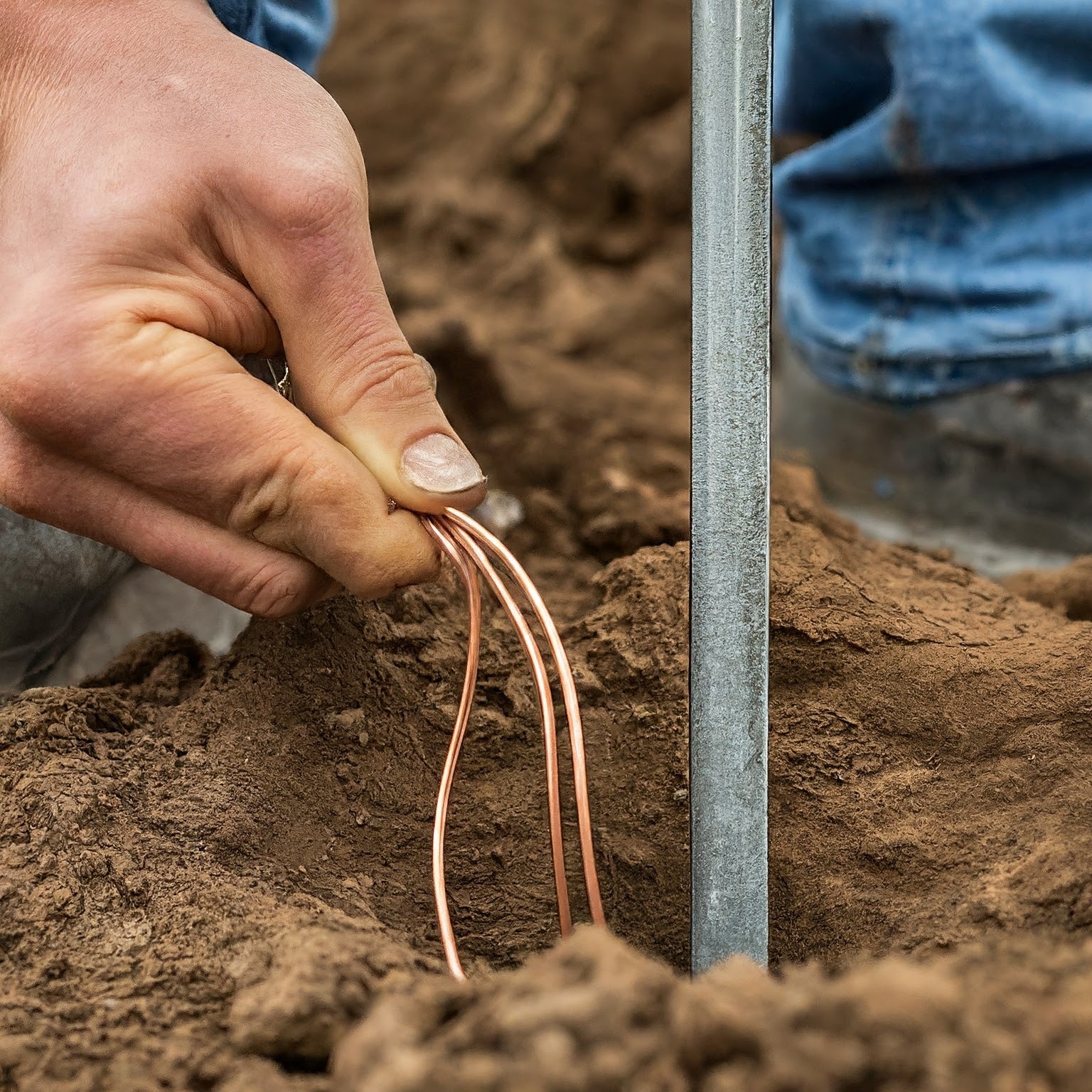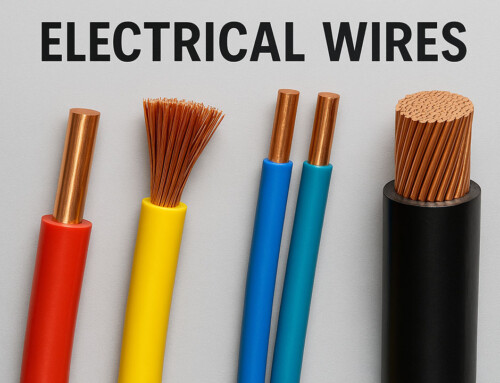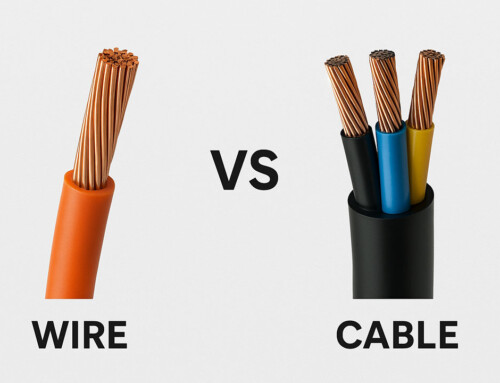Table of Contents
Have you ever wondered why electricians pay so much attention to wire sizes? The reason is simple: safety. Grounding wires are crucial components of any electrical system. These often-overlooked wires serve as a safety path for unwanted electrical currents, ensuring that they flow safely back to the earth rather than through your appliances or, even worse, through you. Using the incorrect size of ground wire can have devastating consequences. Improperly sized wires can overheat, leading to electrical fires and causing damage to your valuable equipment. It’s essential to understand the available ground wire sizes and their specific applications in order to ensure the safety and reliability of your electrical system.
Ground Wire Size Chart
| Circuit Amperage (Amps) | Copper Wire Size (AWG) | Aluminum Wire Size (AWG) | Maximum Distance (Feet) | Common Applications | Additional Considerations |
| 15 | 14 | 12 | 50 | Residential lighting, outlets | Ensure proper grounding for safety and consider voltage drop for longer runs |
| 20 | 12 | 10 | 50 | Residential outlets, small appliances | Check for voltage drop, copper preferred for better conductivity |
| 30 | 10 | 8 | 50 | Air conditioners, water heaters | Aluminum wires need to be larger than copper, considering the total circuit length |
| 40 | 10 | 8 | 100 | Electric dryers, large appliances | For distances over 50 feet, consider upsizing the wire to prevent voltage drop |
| 60 | 10 | 8 | 150 | Subpanels, large appliances | Account for voltage drop in longer runs, use copper for critical applications |
| 100 | 8 | 6 | 200 | Subpanels, industrial equipment | Larger aluminum wires (compared to copper) needed, check for compatibility with connectors |
| 200 | 6 | 4 | 300 | Major industrial installations | For critical systems, copper is preferred despite higher costs, aluminum requires meticulous installation to prevent issues |
| 300 | 4 | 2 | 400 | Very large commercial/industrial systems | Ensure grounding adequacy for safety, voltage drop critical over longer distances |
| 400 | 3 | 1 | 500 | Large-scale industrial installations | Highest capacity systems, meticulous installation is required for aluminum wires to prevent safety issues |
| 500 | 2 | 1/0l | 600 | Major industrial installations | Consult NEC guidelines, significant voltage drop considerations over long distances |
| 600 | 1 | 2/0 | 700 | Heavy industrial equipment | Copper offers superior performance. Professional assessment is recommended for high-capacity systems |
| 800 | 1/0 | 3/0 | 800 | Large-scale industrial equipment | Ensure adequate grounding, consider long-term efficiency and safety |
| 1000 | 2/0 | 4/0 | 1000 | Very high-capacity systems | Professional consultation is necessary and meticulous installation required |
| 1200 | 3/0 | 250 kcmil | 1200 | Extra-large industrial installations | Critical systems require the highest reliability, consult NEC guidelines |
| 1600 | 4/0 | 350 kcmil | 1400 | Large-scale commercial systems | Extensive runs require precise voltage drop management, professional installation advised |
| 2000 | 250 kcmil | 400 kcmil | 1600 | Very high-capacity industrial systems | NEC compliance crucial, meticulous installation to ensure safety and efficiency |
| 2500 | 350 kcmil | 600 kcmil | 1800 | Major commercial/industrial systems | Consult NEC guidelines, significant voltage drop considerations over long distances |
| 3000 | 400 kcmil | 600 kcmil | 2000 | Very high-capacity systems | Professional consultation is necessary and meticulous installation required |
| 4000 | 500 kcmil | 750 kcmil | 2200 | Extra-large industrial installations | Critical systems require the highest reliability, consult NEC guidelines |
| 5000 | 700 kcmil | 1200 kcmil | 2400 | Large-scale industrial equipment | Ensure adequate grounding, consider long-term efficiency and safety |
| 6000 | 800 kcmil | 1200 kcmil | 2600 | Very high-capacity systems | Professional consultation is necessary, and meticulous installation required |
Understanding the Ground Wire Size Chart Table
To effectively use the Ground Wire Size Chart, it’s important to understand the table headers:
- Circuit Amperage (Amps): Refers to the current rating of the circuit breaker or fuse protecting the circuit.
- Copper Wire Size (AWG) & Aluminum Wire Size (AWG): Denote the American Wire Gauge (AWG) sizes for copper and aluminum grounding conductors, respectively.
- Note
- 4/0 AWG can also be written as 0000 AWG (pronounced “four-aught wire”).
- 1/0 AWG is commonly called “one-aught wire” (different from 1 AWG, which is “one-gauge wire”).
- Maximum Distance (Feet): Indicates the recommended maximum length for the ground wire to maintain safety and efficiency.
- Common Applications: Provides typical uses for each wire size and amperage rating, helping you identify the correct wire size for specific electrical installations.
Ground Wire Sizing Methods
There are two main methods to ensure you’re using the correct and safe ground wire size for your project:
- Using a Grounding Conductor Sizing Chart (Primary Method):The National Electrical Code (NEC) offers comprehensive grounding conductor sizing charts, which outline the minimum recommended size of grounding conductors in American Wire Gauge (AWG) or thousands of circular mils (kcmil). These sizing charts are based on the amperage rating of the circuit. Consulting these charts is crucial to ensure that the grounding wire can effectively handle potential fault currents. This is essential for maintaining electrical safety and compliance with NEC regulations, as it helps prevent electrical hazards and ensures the overall safety of the electrical system.
- Using a Wire Size Calculator (Secondary Method):When determining the appropriate size for grounding conductors, it is essential to consider various factors to ensure the safety and effectiveness of the wiring system. A good practice is to consult grounding conductor sizing charts as a starting point. These charts offer general guidelines based on common scenarios. However, in complex wiring projects or installations where precision is crucial, it is important to perform more detailed calculations. In such cases, online wire size calculators can be immensely helpful.Online wire size calculators take into consideration a wide range of factors, including the material of the wire (copper or aluminum), voltage drop, and the length of the wiring. By accounting for these variables, these calculators can provide tailored recommendations for the most suitable wire size that aligns with specific project requirements. This tailored approach ensures that the selected wire size meets safety standards, minimizes voltage drop, and supports the overall effectiveness of the wiring system. Utilizing wire size calculators in these scenarios is crucial for ensuring safety and optimizing the performance of the electrical system.
Remember: Wire size calculators are meant to provide general information and should not be used as a substitute for seeking guidance from a certified electrician, especially for intricate wiring tasks or if you have any doubts about the accuracy of the calculations.
Dangers of Using an Undersized Ground Wire
It’s crucial to ensure that the grounding wire you use is of the correct size for the electrical circuit. Ground wires play an important role in safely directing fault currents away from your appliances and back to the earth. If the grounding wire is too small, it can pose serious safety risks. An undersized grounding wire may overheat, potentially leading to melting or ignition, which can result in electrical fires and damage to equipment. In addition, in worst-case scenarios, an undersized grounding wire could also create a shock hazard. To avoid these risks, it’s essential to use the correct grounding wire size based on the circuit’s amperage rating. This can be determined by following the guidelines outlined in the National Electrical Code (NEC) or by consulting a qualified electrician for expert advice.
Conclusion
Understanding the importance of ground wire sizing in electrical safety is crucial. It involves considering various factors such as the type of electrical system and the specific application. Selecting the right size wire is essential to ensure that the electrical system operates safely and efficiently. By using proper methods and considering all relevant factors, you can guarantee the safety and functionality of the overall electrical system.
FAQs
What size ground wire for 100 amp service?
For a 100 amp service, it is generally recommended to use a ground wire of at least 8 AWG if it is copper or 6 AWG if it is aluminum. This grounding conductor plays a crucial role in safely redirecting electrical faults and preventing electrical hazards.
What size ground wire for 60 amp?
For a 60 amp service, the recommended ground wire size is typically No. 6 copper or No. 4 aluminum. This grounding conductor is essential for safely diverting electrical faults away from the electrical system, thereby minimizing the chances of electrical hazards like shocks and fires.
How is earthing size calculated?
Earthing size (grounding electrode system) is calculated based on factors such as fault current, soil resistivity, and fault duration. The NEC or local regulations provide formulas or tables to determine the earthing size, ensuring the system can effectively dissipate fault currents and prevent electrical hazards.






